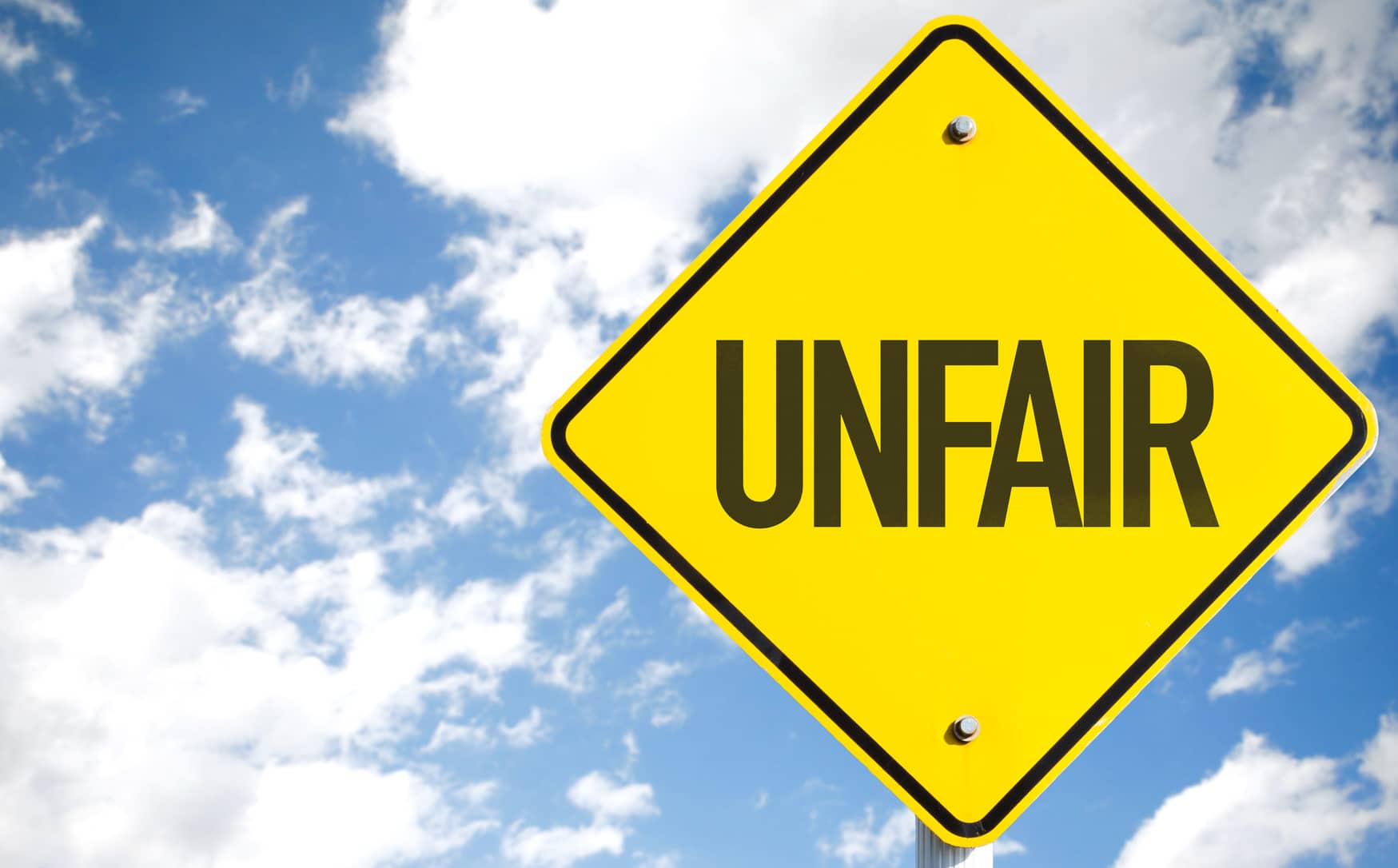
Discrimination is essentially a form of tribalism. That doesn’t make it right – far from it. But it does go some way to explaining why certain pockets of the general population fall into xenophobic behaviour. Because in some ways, it’s a part of cultural programming that is rooted in the fear state.
That being the fear of the unknown. We criticise and rail against it – until of course, we let go of those biases, engage with those people’s and cultures and realise that fear… It was completely irrational. A construct and group mind think that we’ve fallen victim to… And the only way to get away from those behaviours is to become completely aware of them. And in order to get away from discrimination, we need to understand the full spectrum of the types of discrimination.
So here are eight types of discrimination and how they play out….
1. General Bias (Perceptual Discrimination)
When we think of bias, it’s essential a glitch in the way we process information. And so, most forms of bias are actually shortcuts that we use to process information quicker and make better decisions. And they can actually be quite helpful. But when these biases are informed with judgements about people of another race, gender, age or sexual orientation, they can backfire pretty hard. At one point, these biases were incredibly useful for us to help maintain the safety of our tribe and community. But now, those same programs that used to provide protection from outside forces that did pose a genuine threat, are now the things that divide us. Keeping us in disunity. To offer it to you in a nutshell, bias is a conscious preference of one outcome over another. And that’s fine when we’re planning dinner. But when it comes to the preference of people based on characteristics over their integrity… That’s when we run into schisms in society. Unnecessary suspicion and division. And that can and often does lead to…
2. Minority Stress & the Inability to Express
Immigration has been a part of the entire building of our culture for thousands of years. We’re absolutely hardwired to explore. And through travelling to foreign lands, we become the minority, which can often bring with it the obligation to assimilate and let go of some of our identity for the sake of integration. Minority stress is something that’s separate from the regular internal and external factors that affect us and comes from the expectations placed on us to conform to our environment and our peers. So, in a sense, the minority can find themselves in a mindset of self-persecution for not fitting the colloquial stereotype, worrying about perception, being rejected and just plain fear for safety. There have been plenty of tragic cases recorded in the media from black children trying to scrub their skin white to fit in at school. And others dumbing down their heritage in order to blend in with everyone else. Which, if it were allowed to flourish would mean we would never benefit from the variety of perspectives each of us has to offer. The result would be a bland mono-culture in which everyone thinks and acts the same way.
3. Denying Access to Commonly Accessible Resources
We cannot thrive unless we have access to proper amenities. And that covers everything from nutritional requirements, shelter, education, work opportunities and recreational spaces. So, for us to truly thrive as a society, we all need equal access to all of those things. They’ll all held in fine balance with one another. If you don’t have access to good nutrition, your capacity to work suffers. If your work suffers, you can’t take advantage of opportunities as they come your way. And so, maybe you can’t afford to live in the area you want for your children to grow up and don’t have access to decent recreational spaces. Taking a more meta-view, you could say there are really four main socially valued resources.
- Material needs like food and shelter
- The opportunity and space for public expression
- The space to have public identities that foster self-worth
- Skills and understandings that lead to fulfilment
These are the things that discriminators will seek place off-limits to the people they’re targeting. The belief is that having widespread access to these amenities in their eyes will lessen the hold they have over the things. And reduce their value. And one of the prime examples that could fit within this bracket, but also needs to take the spotlight itself is…
4. Disqualifying Certain People as ‘Inappropriate’ for Leadership Roles
And you can also think of this as ‘vertical discrimination.’ Because there’s no getting around the fact that within some organisations and cultures, there’s a certain sense of conservatism at play, which leads to exclusion of people. And it quite often means looking over candidates who are well qualified for the job in favour of someone who fits the profile they’re looking for… This has been a big problem for years within large companies with gender equality. We live in a society which leans far more into being a patriarchy, to put it mildly. And so equal opportunities still aren’t exactly what they should be. It used to be that women could get certain roles because of gender, and that’s changing. But it’s a slow change. The same with disqualifying people of certain ethnicities – in a more covert whitewashing of organisation – which is also changing. Reforms like the Rooney rule where at least one black candidate must be interviewed for a job in progress – yet it’s still baby steps.
5. Harassment and Bullying
And there’s a bit of grey area between the two here. They’re both similar and yet different. Harassment is illegal while there’s no legal definition at present for bullying is… In the UK, harassment refers to any form of bad treatment related to a protected characteristic. (something which in essence place you within a minority group.) Bullying on there other hand is seen as behaviour that’s malicious, intimidating, offensive, insulting, and causes either mental, emotional or physical harm. So, all forms of harassment is in effect bullying, but not all bullying is harassment because it’s not targeting a person with a specific characteristic.
Some examples of harassment include:
- Sexual Harassment
- Physical Harassment
- Psychological harassment.
- Third-party harassment.
And obviously, harassment can happen anywhere at any time. Public harassment is absolutely a thing that shouldn’t be overlooked, especially in communities with a high ratio of immigrants, asylum seekers and other displaced foreign nationals. But a lot of also happens within the workplace. We’ll refrain from cycling through all the various scenarios as it’ll take way too long. But I do want to take a look at another type of discrimination that branches off from harassment and that’s…
6. Microaggressions
And this is where many well-intentioned people who wouldn’t consider themselves to be prejudiced or hold bias can actually cause a lot of unintentional harm. Microaggressions are statements that communicate a kind of covert distaste for someone. They’re essentially backhanded compliments. And so, the term microaggression doesn’t refer to the size or impact of what’s being said, but more the manner in which they’re delivered. In a veneer of friendliness that is sometimes sincere – sometimes not But… equally damaging all the same. An example might be something like:
‘I don’t normally get on well with gay people, you’re actually alright.’
There is a compliment there just about, but it’s so wrapped up in prejudice, which is all that will end up being felt by anyone lucky enough to have this comment bestowed on them.
And another one might be:
‘Oh, you’re successful for a [insert ethnicity]’
But that’s not the only way they can occur. And oftentimes, these comments can be so subtle that neither party latches onto the subtext of what’s actually being said. But when it is called out, the discriminator will dismiss it as a joke and put it on the other person for being too sensitive in a form of cultural gaslighting.
7. Secondary Trauma
And this is something that you might not be aware of… And takes into account the long-lasting emotional effects of the trauma caused by any type of discrimination we’ve talked about. Which, can lead to emotions such as sadness, anger, shame, fear, and lack of self-worth. Secondary trauma occurs when someone who’s exposed to the account or experience of a person who’s been subjected to discrimination and then experiences those same emotions. So you could think of it as trauma by association. And sometimes also referred to as vicarious trauma. But don’t be fooled by the name, secondary trauma isn’t any less damaging than direct discrimination. As a lot of the associated symptoms are still present such as:
- Nightmares
- Hypervigilance
- Hyperarousal
And so, you don’t need to be the one directly experiencing discrimination to feel the effects of it, as it has such as strong ripple effect throughout the entire community of the targeted individuals. You might argue that this isn’t a type of discrimination. And some of the people experiencing it may like to dismiss it, but the fact is a real thing, which does affect people. And might not otherwise be brought into the discussion about discrimination.














